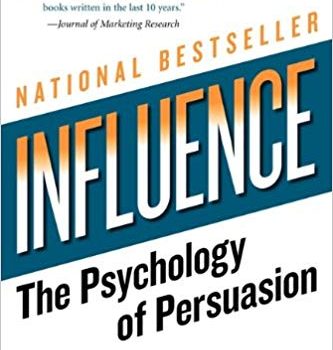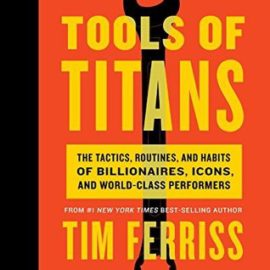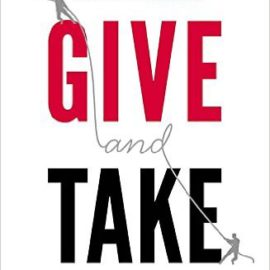

Have you ever wondered how persuasion works? How are salespeople, fundraisers, and politicians able to lure us into compliance— without us even thinking that we’re being manipulated?
This is what Robert Cialdini’s Influence: The Psychology of Persuasion sets out to answer. The book shows how the persuaders of the world use our basic mental instincts against us, transforming them into tools of compliance. By exploring the origins and common uses of six principles of persuasion—reciprocity, commitment/consistency, social proof, liking, authority, and scarcity—you’ll learn to spot when you’re being hustled and discover how to beat the persuaders at their own game.
1-Page Summary of Influence
Influence: The Psychology of Persuasion explores the art of compliance. It sets out to answer the question, “How do we become convinced to do the things that we do?”
A lot of persuasion rests on the manipulation of human fixed-action patterns. Fixed-action patterns are the mental shortcuts and assumptions that we use to fill in the blanks of our everyday experience. For example, we assume that when other drivers on the road are braking, we should brake too. Or that a long line of people means that there must be some desirable attraction at the end. Or that a high price for an item at the store indicates that it’s rarer or of higher quality (or both). A fixed-action pattern causes us to respond in the same, predictable way to certain stimuli, over and over again.
These fixed-action patterns are useful because it’s impossible for us to individually assess every single situation on its own merits: we would just get overwhelmed with information and be unable to make any decisions at all. These shortcuts let us make decisions without being burdened by endless analysis and weighing of pros and cons. And usually, our fixed-action patterns lead us to the right conclusions and help us make correct decisions.
Compliance Practitioners
While our fixed-action patterns are usually an asset for us in everyday life, they are easily manipulated and exploited by compliance practitioners. These are professional persuaders, people whose job it is to get you to say “yes” to whatever it is they’re offering. They’re usually salespeople, but they can also be fundraisers asking you to contribute to a charitable cause or sign a petition, or they can be politicians asking for your vote. If they’re trying to get you to do something that you wouldn’t do on your own, they’re a compliance practitioner.
These individuals are very skilled at using our fixed-action patterns against us: that is, they manipulate us into behaving the right way in response to the wrong stimuli. A store owner might, for example, mark up the price of a low-quality item to make it more desirable to you: knowing full-well that your mental shortcut would usually lead you to believe that a high-priced item is of high quality. They’re turning your fixed-action advantage into a powerful disadvantage that clouds your judgement and leads you to make faulty decisions.
Most compliance practitioners use six psychological principles of persuasion:
- Reciprocity
- Commitment/Consistency
- Social proof
- Liking
- Authority
- Scarcity
Reciprocity
The Reciprocity Principle tells us to repay others when they do something for us. Most of the time, it just feels like common decency: when a friend treats you to lunch, you pay for their meal the next time; when your neighbors invite you over, you return the courtesy.
The principle is an evolutionary inheritance: early human communities with strong social cohesion and an ability to work together had a better chance of survival. By knowing that a favor would be returned, reciprocity helped to lower the “costs” of helping one’s neighbors and kin.
Thus, compliance practitioners know that you’re more likely to feel obliged to them if they present you some small gift or token gesture of kindness before they make their request. This is why sellers are so fond of promotional offers, free samples, and small gifts: they know you’ll respond with a “gift” of your own by buying whatever it is they’re trying to promote. Or they’ll ask for an initially ludicrous request that you’ll reject, only to present you with a second, smaller request. This rejection-then-retreat tactic is designed to lull you into making a reciprocal concession by giving in to their second ask.
To say “no” to this kind of reciprocity, you have to distinguish between people who are engaging in genuine acts of kindness and those who are simply trying to trick you into doing something for them. You are socially obligated to return a genuine favor with another favor: you’re not obligated to return a trick with a favor.
Commitment/Consistency
The Consistency Principle says that humans have an obsession with sticking to their guns. Once we’ve committed to something, we pressure ourselves to conform to that commitment. In fact, we’ll convince ourselves that our current behavior and beliefs align with our past behavior and beliefs, even when they clearly don’t.
For example, gamblers who are unsure about their bets before they place them have been shown to be far more confident after they’ve put their money on the table. They convince themselves that they were always confident in the horse they picked or the color on the roulette wheel they chose.
Consistency is generally useful for day-to-day human experience and it’s usually a good attribute for someone to have. It frees us from potential mental overload by giving us an easy, one-size-fits-all guide for how to react to a multitude of situations and people that we encounter each day.
Unfortunately, consistency and commitment can also be exploited. Our desire for internal consistency can turn even a small commitment into larger and larger ones. In one California study, homeowners were shown to be far more willing to have an unsightly billboard installed on their property after they had agreed to have a much smaller one erected a few weeks earlier. Thus, compliance practitioners who are “only” asking you to sign a petition or answer a few seemingly innocuous questions are usually trying to build you up to agree to ever-larger requests.
You can feel it intuitively when you’re being asked to do something you don’t want to do. The key to fighting back is spotting these situations quickly. Otherwise the compliance professional will corner you with your own commitment. You should then turn the table on the compliance practitioner. Tell them that you’re onto them and you know exactly what they’re trying to do. Make decisions for a reason: don’t make reasons for a decision.
Social Proof
The Social Proof Principle posits that we decide what’s correct based on what other people think is correct. If lots of other people are doing something or thinking something, then it must be good and worthy of imitation. It’s why television producers add laugh tracks to unfunny sitcoms: they know that, through social proof, we’ll be more likely to laugh if we hear others laughing (even if we don’t find the content to be funny on its own).
Of course, social proof is often valuable: you’ll tend to make fewer mistakes if you follow social evidence than if you ignore it. When a lot of people are doing something, it usually is the right thing to do. We can look to others for how to model our behavior in everyday situations, rather than needing to meticulously analyze everything.
Like this summary? Want to learn more from books than ever? You'll love my product Shortform.
Shortform has the world’s best guides to 1000+ nonfiction books and articles. Even better, it helps you remember what you read, so you can make your life better. What's special about Shortform:
- The world's highest quality book guides - we discuss the book's main ideas, with expert analysis and commentary expanding will beyond the book
- Interactive exercises that teach you to apply what you've learned
- Discussion communities - get the best advice from other readers
Sound like what you've been looking for? Sign up for a 5-day free trial here.
Social proof can also be faked or manufactured, however, or used for self-serving purposes by compliance practitioners. It’s why so many product advertisements talk about being the “fastest-growing” or “highest-selling”: the marketers want to convince you that there’s a groundswell of demand for the product from others. Or even worse, they’ll create fake “person-on-the-street” commercials where allegedly “real” people (who are actually paid actors) talk up the merits of the product.
To resist the manipulation, you need to look closer at group behavior. Is there a reason to do something, beyond just the fact that everyone else is doing it? Don’t be like a pilot who flies by relying solely on her instruments. You also need to actually see the sky in front of you. Sometimes you do need to look critically at the world around you, take the time to assess situations, think for yourself, and apply your own individual judgement.
Liking
The Liking Principle stipulates that we’re more likely to comply with requests from people that we know and like. Thus, we are more amenable to the compliance efforts of neighbors, friends, and family. It’s why salespeople will often mention the names of members of your family or friends that they’ve done business with. The salesperson wants you to translate some of your warm feelings about those individuals onto them.
We are also more willing to acquiesce to people who we see as being good-looking, affable, or who profess to like us. This creates a wide opening for compliance practitioners. If you like the seller, you’ll like what she’s selling. The efforts at manipulation can be almost comically transparent and still be effective: one car salesman claimed great success just by mailing generic postcards to his customers every month saying nothing more than “I like you.”
There’s nothing wrong with liking people, and usually someone’s charm or warmth indicates that they are trustworthy and reliable. But to avoid being manipulated, you need to evaluate each situation on the merits. If you feel that you are strongly liking someone after only being briefly acquainted with them, you need to pause and assess what is producing these feelings. Always separate your personal feelings for the person trying to sell you something from the thing you’re actually looking to buy. Judge your potential decision solely on the merits: don’t comply with a request just because you like the requester.
Authority
The Authority Principle states that people are hard-wired to comply with requests that come from an acknowledged and accepted source of authority. Thus, we are strongly inclined to be deferential to people whom we consider to be in a position of power or expertise, like teachers, members of the armed forces, police officers, doctors, and judges. In fact, we respond to even just the symbols of authority—like titles and uniforms.
Of course, there are good and legitimate reasons why we’re strongly conditioned to obey authority. Leadership, hierarchy, and authority are obviously necessary ingredients in any functioning society. Our ancestors wouldn’t have been able to organize complex societies if there hadn’t been some authority figure giving orders, assigning priorities, and allocating resources. Indeed, authority is the basis of government and law: without it, there’s only anarchy.
Unfortunately, authority can also be abused and exploited. In the famous Milgram experiment at Yale, ordinary people were shown to be highly vulnerable to pressure from an authority figure who instructed them to administer painful and dangerous electric shocks to fellow experiment participants. Clearly, the instinct to obey authority runs deep and can be easily exploited by compliance professionals who only need to adopt the most superficial patina of authority to trick people into acceding to their requests.
To avoid getting suckered, don’t blindly obey authority. Always assess an authority figure’s credentials and the relevance of those credentials. A cop telling you to pull over is a legitimate authority figure whose training and expertise clearly compel you to comply in this situation. An actor who plays a doctor on a TV show, on the other hand, is not a legitimate authority from which to take medical advice in a pharmaceutical commercial. Their training is as an actor, not as a physician.
Scarcity
The Scarcity Principle tells us that we find more appealing those things with limited availability. Thus, rare goods are expensive, abundant items are cheap. Scarcity is closely related to the idea of loss aversion. We’re inherently conservative and cautious: in fact, we’re more afraid of losing something than we are enticed by the hope of gaining something of equal value.
Like our other fixed-action mental shortcuts, scarcity usually is a good gauge of how valuable something is. It’s simple supply-and-demand: when there’s less of something and there’s a high demand for it, the price increases. It’s why gold is more valuable than iron and why high-skilled workers earn more than low-skilled workers.
But compliance practitioners know how to twist this instinct to their own advantage. It’s why we see so many “limited-time only” or “first-come, first-serve” sales pitches: the goal is to drive you into a scarcity frenzy that forces you to suspend your better judgement and rush headlong into an ill-considered decision.
Our scarcity instinct is accelerated when things become recently scarce (where they were previously abundant) and when they become scarce through social competition. For a salesperson, then, there’s no better scenario than when customers are bidding against one another for a product of limited availability: the sense of loss aversion will compel many people to grossly inflate the value and desirability of the item.
To avoid being manipulated this way, you need to ask yourself…
—End of Preview—
Read the rest of the “Influence” summary at my new book summary product, Shortform.
Here’s what you’ll find in the full Influence summary:
- Why bystanders won’t help you if you’re in trouble, and how to get someone to help
- Why you tend to value things just because they’re scarce, and how to combat this instinct
- How to protect yourself against swindlers and compliance practitioners
- …and much more
Shortform has the world’s best summaries of nonfiction books and articles. Even better, it helps you remember what you read, so you can make your life better. What’s special about Shortform:
- The world’s highest quality book summaries – comprehensive, concise, and everything you need to know
- Interactive exercises that teach you to apply what you’ve learned
- Discussion communities – get the best advice from other readers
Sound like what you’ve been looking for? Sign up for a 5-day free trial here.






